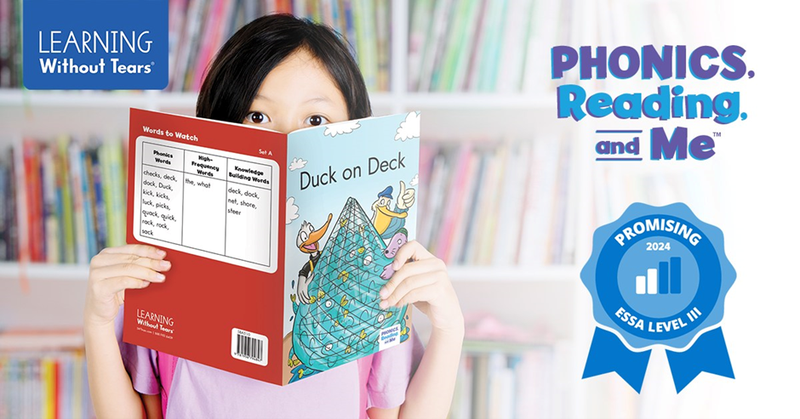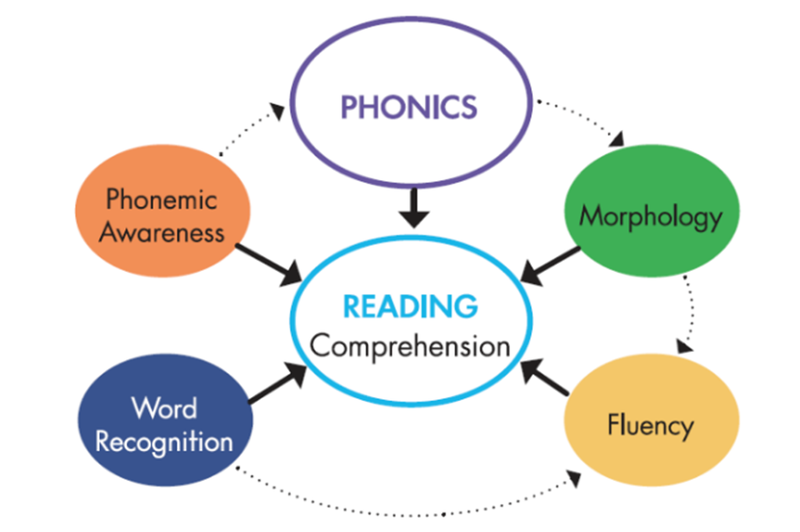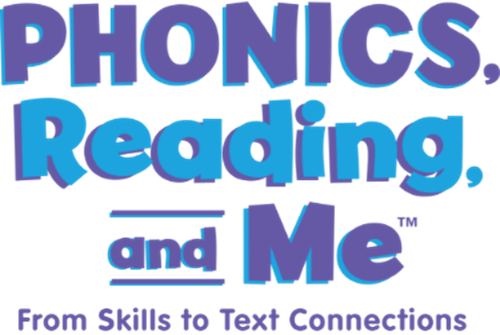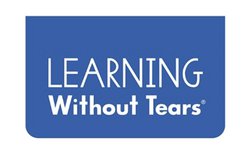Phonics, Reading, and Me™ (PRM) is a supplemental print and digital program designed to enhance students’ reading proficiency through systematic phonics and word analysis skills and application of these skills in rich, connected text. It supplements core literacy programs by addressing foundational gaps through connected text in decodable books and personalized practice. PRM prioritizes sequential learning, starting from basic to more complex skills to improve reading comprehension.
With themed decodable text sets covering 50% non-fiction Science and Social Studies topics, PRM builds both knowledge and vocabulary. Teachers can effectively differentiate instruction using PRM's resources for small group settings. The program includes digital assessments utilizing speech technology for personalized learning paths. Lessons start with an oral reading screener for each skill to gauge the child's ability to read skill words in connected text and guide personalized pathing throughout. Formative assessments provide ongoing support and scaffolding, ensuring students reach proficiency skills. PRM fosters engagement through text-based activities and offers scaffolds for struggling students to achieve proficiency. Ultimately, PRM facilitates the transition from Balanced Literacy to the Science of Reading, and saves teachers time by delivering targeted support.
Formats/platforms used:
Phonics, Reading, and Me™ includes a variety of formats/platforms for multimodal and differentiated instruction for each student. This includes 70 print student workbooks, 280 web-based digital student texts, interactive digital oral reading and phonics games, reading response journals to apply real-time instruction in encoding and writing, assessments, cards for word building and sorting, and teacher lesson cards that provide teaching points for each phonics skill and every book in the text set.
Primary website URL:
https://www.lwtears.com/
Problem solved:
Many schools face challenges with their literacy instruction: core teaching often lacks explicit phonics and word study, depriving students of authentic reading and writing experiences to reinforce new skills. Additionally, teachers find it difficult to differentiate small group instruction effectively, resulting in a lack of tailored phonics and word study guidance for students with varied needs. Moreover, the shift from Balanced Literacy to the Science of Reading overwhelms many educators, who require support and preparation to implement new practices successfully.
Grades/age range:
Elementary school students grades K through 3rd
Core or supplemental:
Phonics, Reading, and Me™ addresses both core and supplemental literacy needs by providing explicit, systematic phonics and word study instruction, in both print and digital formats, based on the Science of Reading. They recognize the challenges faced in core instruction, where often there's a lack of such explicit teaching and authentic reading experiences. Additionally, the program caters to the needs of diverse learners, including special needs students, offering differentiated small group instruction to ensure targeted teacher-led guidance in phonics and word study. The program understands the transition many educators undergo from Balanced Literacy to the Science of Reading, which is why we emphasize our professional development support to aid in this shift effectively. Through a comprehensive approach, they aim to provide educators with the tools and resources needed to foster strong literacy skills in all the elementary students we serve.

Standards:
Phonics, Reading, and Me™ aligns with core literacy standards to ensure comprehensive coverage of essential skills and concepts. The program emphasizes systematic phonics instruction, grounded in the Science of Reading, to develop strong foundational literacy skills. Through thematic units and decodable text sets, students engage with diverse topics while reinforcing phonics principles. Standards alignment information can be accessed here: https://www.lwtears.com/resources/learning-without-tears-correlations-state-standards
Lesson time needed:
Phonics, Reading, and Me™ is designed to fit within existing lesson structures, offering flexibility to accommodate varying schedules and time constraints. The duration of each lesson can be adjusted based on individual classroom needs and pacing, ensuring that essential concepts are effectively taught and mastered within the available instructional time.
Pricing model:
For kindergarten, the classroom kit costs $762 ($31 per student for a class size of 25). The kit includes essential resources such as 26 Letter Books for Letter-Sound Learning, 10 Decodable Student Books, 10 Lesson Cards, a Program Guide, Formative Assessment Cards, Sound-Spelling Cards, Letter Tiles, Posters, Read Aloud Books, Mini Student Books, Reading Response Journal Box Set, and digital licenses for both teachers and students, along with a Family Center for home engagement.
For grades 1 to 3, the classroom kit is priced at $925 ($37 per student for a class size of 25). This kit includes Set B Program Guide, Lesson Cards, Formative Assessment Cards, Sound-Spelling Cards, Letter Tiles, Read Aloud Cards, Decodable Student Books, Mini Student Books, Reading Response Journal Box Set, and similar digital licenses and Family Center access as the kindergarten kit.

What makes Phonics, Reading, and Me unique?
Phonics, Reading, and Me™ stands out in several ways:
● Addressing the "Covid Cliff" and low NAEP Scores: In response to the challenges posed by the COVID-19 pandemic and low NAEP scores, our PRM program employs digital pathing with a "scaffolding up" approach. This means students are guided through a progressive learning journey, empowering them to independently tackle grade-level skills and catch up to expected reading proficiency. Teachers explicitly teach skill, then students immediately apply that skill in decodable text. Scaffolds, including review and prerequisite skill practice, are offered on an individualize basis. All students read 5 decodable texts per skill, with personalized supports offered as needed. Speech enabled oral readings in every lesson capture data to drive instruction and to save teachers time.
● Supporting Teachers with the Shift to Science of Reading (SoR): As the Science of Reading (SoR) gains prominence in literacy instruction, the program assists teachers in aligning with its principles, and provides evidence-based instructional resources and support in implementing effective phonics and reading strategies grounded in SoR principles, contributing to improved literacy outcomes for students. New and novice teachers are supported to effectively teach these skills to students.
● Importance of Knowledge Building and Vocabulary: Recognizing the significance of knowledge building and vocabulary development, our program organizes decodable text sets thematically. This approach helps students build content knowledge and expand their vocabulary, with a particular emphasis on non-fiction science and social studies topics to provide a well-rounded education experience.

Characteristics:
Phonics, Reading, and Me™ boasts several key characteristics that are intricately woven into its design, focusing on both user interface (UI) and user experience (UX) to enhance effectiveness:
- Intuitive UI: The interface is designed to be intuitive, ensuring ease of navigation for both teachers and students. Clear labeling, logical organization of resources, and intuitive menu structures contribute to a user-friendly experience.
- Engaging UX: We prioritize engagement through interactive elements, visually appealing graphics, and multimedia content. Students are immersed in learning through interactive activities, animated demonstrations, and engaging digital tools, fostering a dynamic learning experience.
- Adaptive Pathing: Our program employs adaptive pathing, tailoring the learning journey based on individual student progress. Adaptive algorithms adjust the difficulty level of tasks, provide personalized recommendations, and scaffold learning to meet diverse needs, ensuring optimal learning outcomes for each student.
- Feedback Mechanisms: We integrate feedback mechanisms throughout the learning process, providing immediate feedback on student responses, progress tracking tools for teachers, and diagnostic assessments to inform instruction. This feedback loop enhances learning efficacy and supports data-driven decision-making.
- Multimodal Instruction: Recognizing diverse learning styles, our instructional design incorporates multimodal elements, including auditory, visual, and kinesthetic components. This multifaceted approach accommodates varied learner preferences and maximizes engagement and retention.
- Alignment with Instructional Design Principles: Our product adheres to established instructional design principles, such as scaffolding, chunking, and spaced repetition. Lessons are scaffolded to gradually increase complexity, content is chunked into digestible segments, and key concepts are reinforced through spaced repetition, fostering effective learning and retention.
By integrating these characteristics into the design, the product offers a seamless and impactful learning experience that is responsive to the needs of both teachers and students.
Here’s what users are saying:
“Phonics, Reading, and Me's app helps the teacher in many areas but especially with fluency. As a teacher, assessing fluency was my least favorite part to assess because it's time-consuming and you also get interrupted by the other students. The app removes those difficulties, assessing the students in real time for me and giving me immediate feedback.”
--Ambar Cordova, Seaside School Consortium, Inc.










